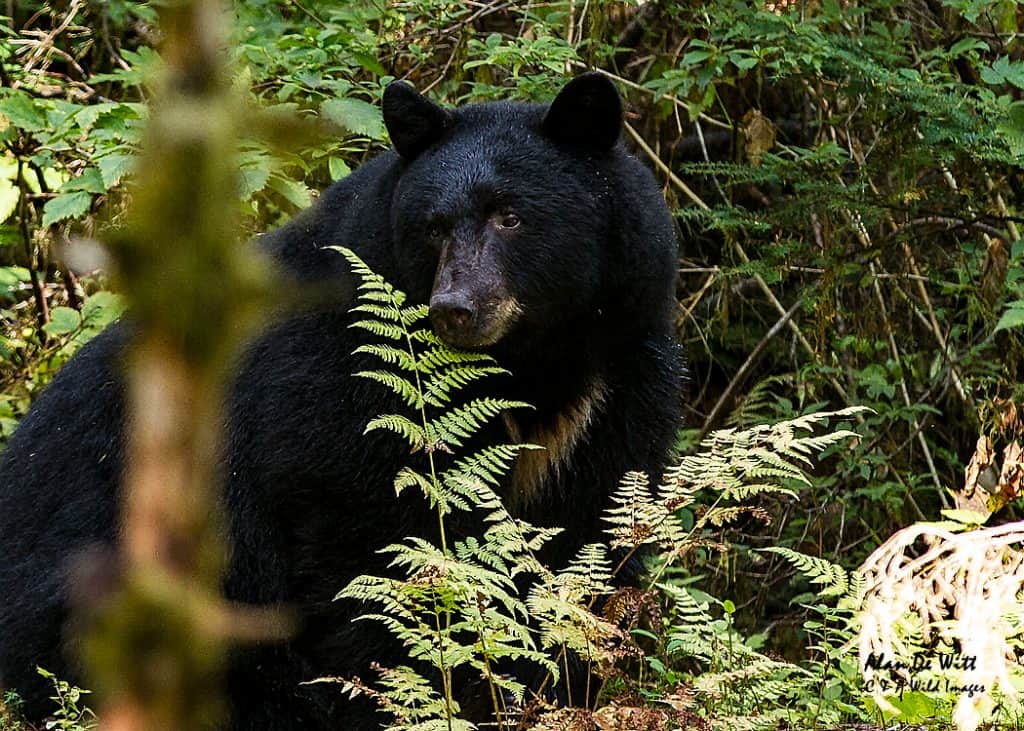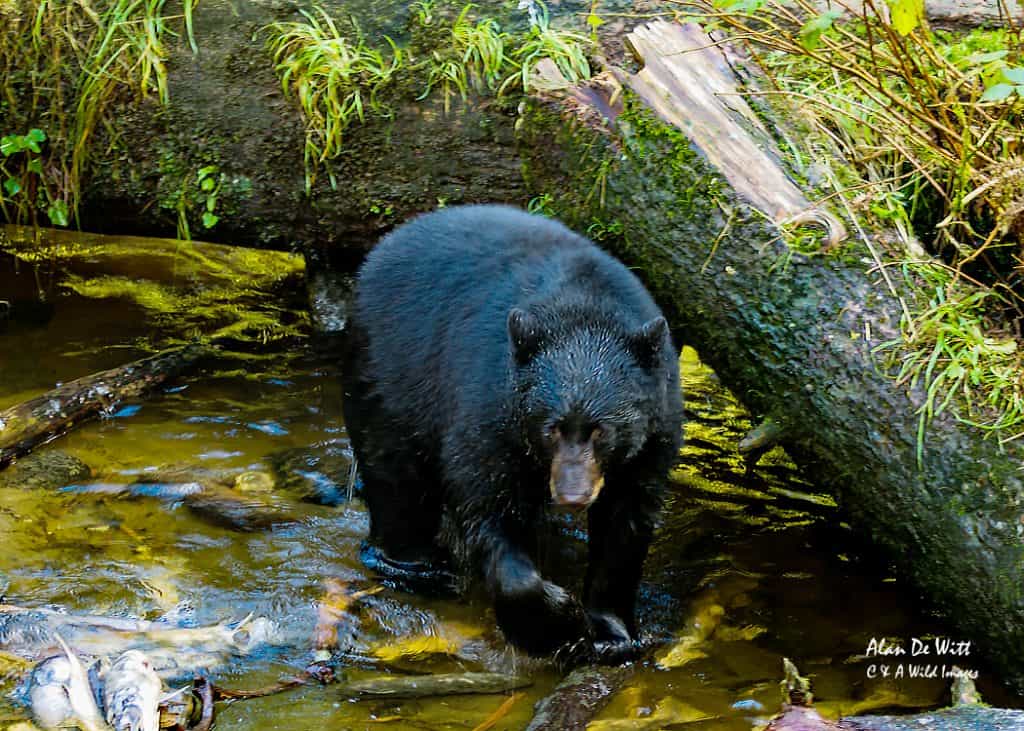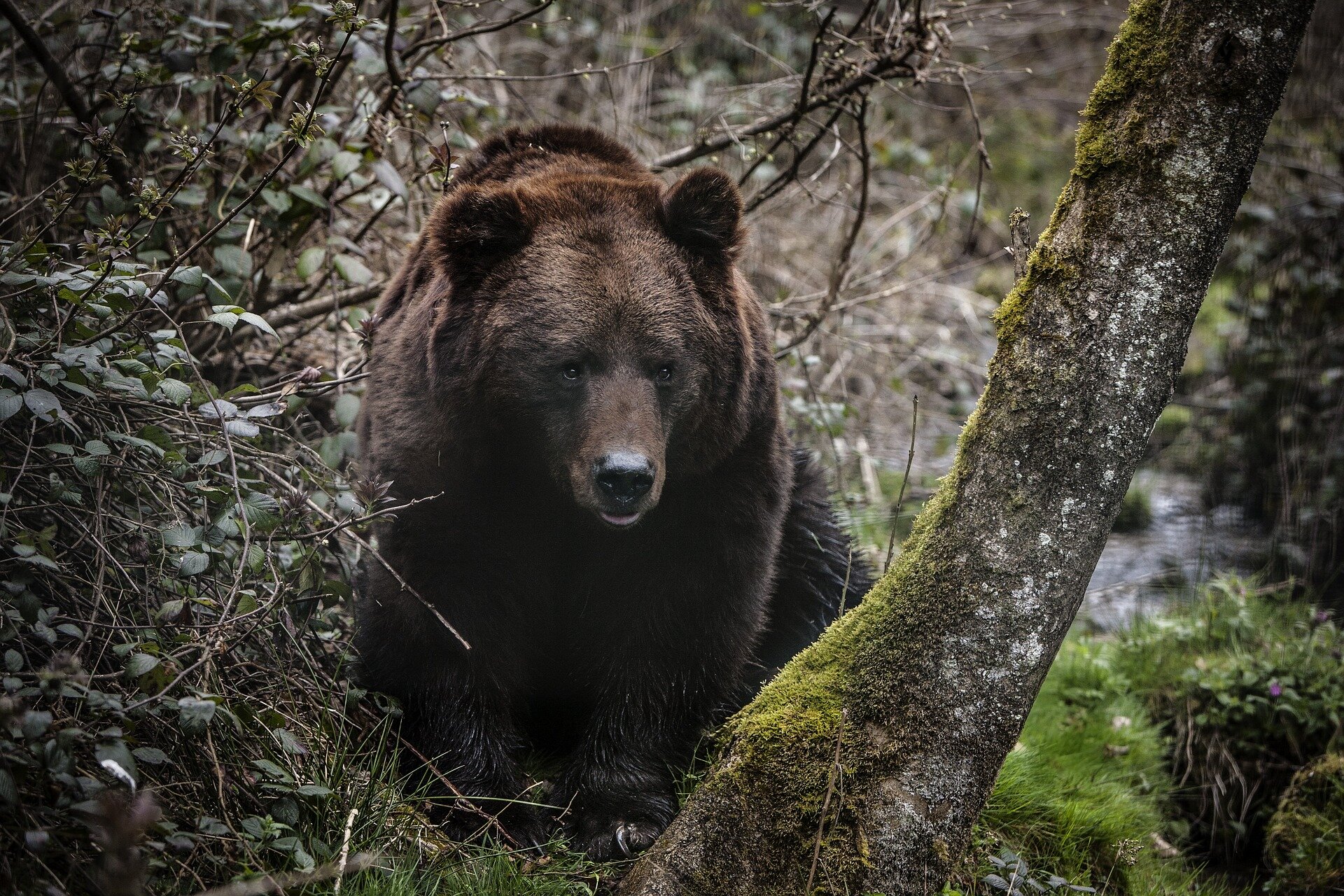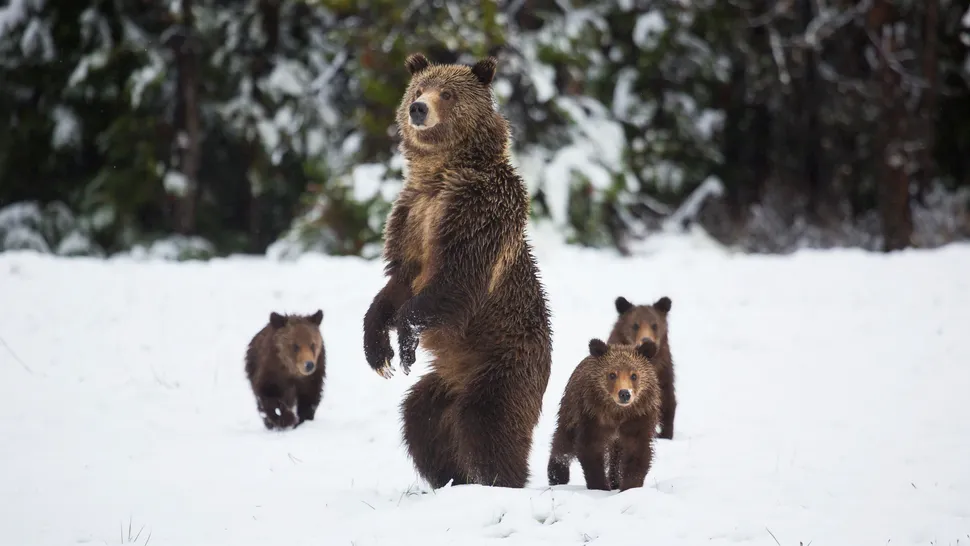Whilst in Ketchikan my wife and I took the opportunity to visit, be it briefly, the Tongass forest in the hope of seeing black bears. We didn’t know a great deal about the Tongass before our trip, but its reputed to have one of the has the highest density of black bears and brown bears in the world and it is one of the few places where bears outnumber people.
The Tongass National Forest is the world’s largest remaining temperate rainforest covering most of the southeast Alaska Panhandle. As well as thousands of acres of spruce, hemlock and red cedar. The Tongass consists of a vast number of clean creeks, rivers and lakes all of which provide a home to fish including trout and salmon. This huge area of forest is also home to both brown and black bear, deer, bald eagles and wolves.
Although bears, are omnivorous and will eat a wide range of foods in late summer, when the salmon are running back to their spawning grounds bears can eat up to 80 to 90 pounds of fish a day to fatten up for the winter ahead. During this summer binge, they can gather in numbers in the creeks to feed

There are a number of places in the Tongass where bears congregate naturally when there are fish in the streams, and in the area we visited a boardwalk above the creek had been built to make viewing the bears easier and safer, with minimum disturbance to the animals.

Because the salmon had been running for a few weeks before we arrived, we were told that the chances of a sighting were good. I think our small group certainly didn’t expect to spot a bear within a few minutes of starting down the trail. In front of us curled up in the bottom of a hollow tree was a black bear trying to sleep. The abundance of salmon in the crystal clear creek below suggested that he had probably eaten his fill, further along the creek through almost magical Middle Earth looking forest where more black bears chasing salmon through the pools and eddies caused by the trees which had fallen into the creek.

Gulls were shrieking loudly as they shared the feast. A large black bear suddenly appeared from behind a tree on the slope above us as he cautiously waited his turn to descend into the creek. I think we probably sighted at least eight different bears in and around the creek and had a wonderful opportunity to watch and photograph their behaviour.

As the boardwalk left the side of the creek we walked through the ferns and moss draped trees along to the cove where a large number of harbour seals were eating the salmon.

This was an unforgettable experience and another excursion I would recommend.
Alan De Witt
After spending a career that demanded much of my time and energy. I'm now retired and finally found some time to pursue an interest in wildlife and photography as well as putting together a website C & A's Wild Images.
I now live in Norfolk, an ideal location in the UK to see wildlife and over the years have also had the opportunity to visit and spend time using the camera in interesting and sometimes remote parts of the world. I first became interested in trying to capture wildlife images when I left university in the days of slide film. Initially I used two compact cameras with 20+ zooms but now have moved to a professional Canon SLR set-up.






Leave a Reply